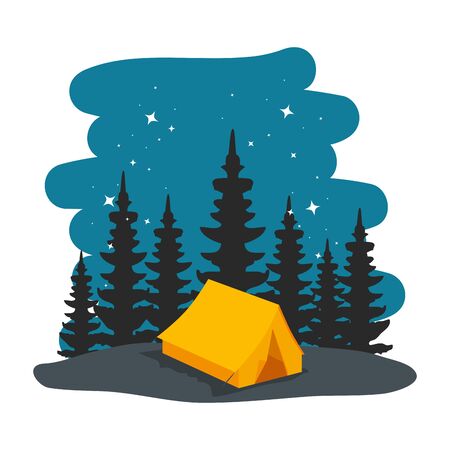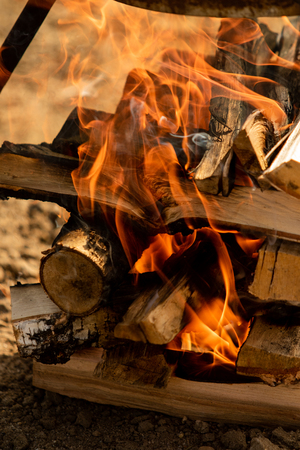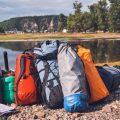1. Setting Up a Safe Campfire
When it comes to campfire safety, where and how you build your fire matters. Choose a site that’s far from tents, trees, dry grass, or anything flammable. Look for existing fire rings whenever possible to reduce your environmental impact and follow local guidelines. Clear a ten-foot radius around the fire pit, removing leaves, sticks, and debris. Build your fire in a designated ring made of rocks or metal—never dig new pits where they aren’t allowed. Use only locally sourced firewood to prevent the spread of invasive species and protect native forests. These steps are essential for minimizing risk and making sure your campfire experience is safe for both people and nature.
2. Campfire Safety Best Practices
Building a safe campfire begins with mindful preparation and clear habits. To prevent accidents, always choose a designated fire ring or make a fire pit at least 15 feet away from tents, trees, and overhanging branches. Keep your campfire small and manageable—never build a fire larger than necessary for cooking or warmth. Before lighting the fire, ensure you have water, a shovel, and a bucket of sand nearby for quick extinguishing.
Simple Habits for Fire Control
| Action | Purpose |
|---|---|
| Clear area of leaves & debris | Prevents unintentional spreading |
| Supervise fire at all times | Avoids loss of control |
| Keep fire small & contained | Makes it easier to manage & put out |
| Have water & shovel ready | Quick response in emergencies |
| Fully extinguish before leaving | Prevents smoldering and flare-ups |
Managing Flames Safely
Add wood gradually to avoid sudden flare-ups. Never use gasoline or lighter fluid to start or revive your campfire. If winds pick up, be prepared to put the fire out immediately. Teach everyone in your group about basic fire safety before lighting the match.
Keeping the Area Clear
A clutter-free zone around your campfire is essential. Store gear, chairs, and food away from the flames. Avoid burning trash, plastics, or food scraps that can produce toxic smoke or unpredictable sparks. These simple practices create a safer environment for everyone and help preserve our natural spaces.

3. Preventing Fire Spreading
Preventing your campfire from spreading is crucial, especially in the unpredictable outdoors. Natural strategies work best to contain embers and manage windy conditions. First, always choose a clear, open spot for your fire—at least 15 feet away from tents, trees, dry grass, and anything flammable. Use a ring of rocks or dig a shallow pit to keep the flames and embers contained.
Containment with Nature
Surround your fire with soil, sand, or gravel if rocks aren’t available. These materials act as natural barriers, stopping stray embers from catching on nearby vegetation. Scatter any leaves or twigs far from your fire zone.
Wind Awareness
Before lighting up, check wind direction and speed. Avoid building fires on gusty days; even small winds can send sparks flying. If you must make a fire when it’s breezy, build a low-profile fire and use logs as natural windbreaks to shield flames.
Managing Embers
Keep the fire small and manageable. Never leave it unattended—even briefly. A bucket of water, dirt, or sand should be within reach at all times for quick response if embers escape.
Leave No Trace
When finished, fully extinguish the fire with water and stir the ashes until cold. Make sure no heat remains before you leave the site. Respecting these steps keeps the wilderness safe for everyone.
4. Extinguishing the Campfire Properly
Before leaving your campsite, making sure your campfire is completely out is a vital part of fire safety. Even a small ember can reignite and cause a wildfire long after you’ve gone. Here are the essential steps to ensure your campfire is fully extinguished:
Essential Steps to Put Out Your Campfire
| Step | Description |
|---|---|
| Let it Burn Down | Allow the wood to burn down to ash, if possible. This reduces the risk of hidden embers. |
| Pour Water | Slowly pour water over all embers, not just the red ones. Listen for hissing sounds—it means youre hitting hot spots. |
| Stir and Scrape | Use a stick or shovel to stir ashes and embers while adding more water. Scrape sticks and logs to remove any burning material. |
| Touch Test | Cautiously hover your hand close to the ashes; if you still feel heat, repeat pouring water and stirring until everything is cool to touch. |
Never Leave Until It’s Cold
Your campfire should be cold enough that you can safely touch the ashes with your bare hand—no heat, no smoke, no glowing embers. If water isn’t available, use dirt or sand as a last resort, but never bury the fire; this can insulate hot coals and start a fire later. Practicing these simple steps ensures you leave no trace and protect nature for everyone.
5. Recognizing and Responding to Fire Emergencies
Being prepared for a campfire emergency means knowing how to act fast and stay calm. Spotting danger early is key. Watch for sudden changes like a fire growing quickly, wind picking up, or smoke spreading outside the fire ring. If you notice these signs, don’t hesitate—act immediately. If you can’t control the situation, call 911 or local emergency services right away. Be clear and concise: tell them your exact location, what happened, and if anyone is hurt. While waiting for help, use resources wisely. If safe to do so, try to contain the fire with water, dirt, or a shovel. Never put yourself in danger. Help others move away from the area and keep everyone accounted for. Remember, your safety comes first—fires can be unpredictable and fast-moving.
6. Post-Fire Reflection and Ethics
Every campfire leaves a mark, not just on the land but also on us. After the fire is out and the smoke has cleared, take time to reflect on your actions and their impact. Did you follow all safety steps? Was your emergency response effective? Honest reflection helps you learn from each experience, making every future adventure safer for yourself and others.
Practicing Leave No Trace
Adopting Leave No Trace principles is essential for protecting America’s wild places. This means fully extinguishing fires, removing all traces of ash and debris, and restoring the site to its natural state. Even small embers can spark big problems—double-check before leaving.
Environmental Stewardship
Campfire ethics go beyond rules—they’re about respect for nature and responsibility to fellow campers. By cleaning up thoroughly and encouraging friends to do the same, you help preserve these spaces for generations to come.
Continuous Learning
Nature teaches us with every trip. Share what you’ve learned about campfire safety and emergency response with your community. When everyone learns and cares together, we create a culture that values both adventure and protection of our natural world.


